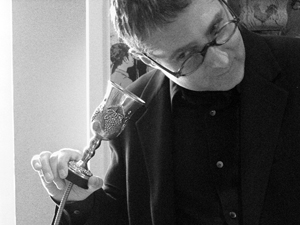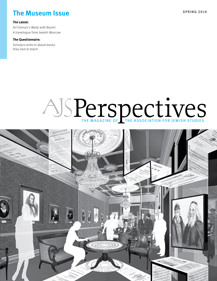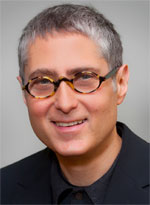
To some extent my ability to include museums in my teaching is a matter of geography. Rutgers, my current university, is located about an hour from New York City, where more than a half-dozen museums of interest can be found; there are relevant museums in New Jersey and Pennsylvania, and even a trip to Washington, D.C. is possible. In addition, other nearby museums, galleries, or historical societies, including the university's own art museum, occasionally mount exhibitions dealing with some topic related to my courses. Yet even without this advantage, Jewish museums would figure in my teaching. Indeed, it has become increasingly easy to study museums without actually visiting them.
Following are suggestions for incorporating museums in Jewish studies courses; these suggestions apply not only to the sort of classes I teach on modern Jewish culture but can be related to a wide range of courses in the field.
1. Museum visits. To take full advantage of the museum visit, I approach it as an opportunity to teach not only about the content of a museum's displays, but also about the museum itself as a cultural medium and a public institution. Therefore, though most museums offer docents to take classes through exhibitions, I generally prefer to ask students to visit an exhibition on their own (this is also often easier to facilitate, given students' busy schedules). Before their visits, I provide students with targeted, yet open-ended, questions for them to consider about the exhibition and the museum itself. I ask them to look at the form of museum display—how objects are arranged, how space is configured, the choices of color, material, and texture made by the exhibition designer—and to consider how this relates to the content of an exhibition. I also ask them to consider museum-going as a social practice, by paying attention to how other visitors engage the exhibition and looking at how museums complement exhibitions with public programs: lectures, film screenings, live performances, etc. In addition, I ask students to look for discussion of the exhibition in reviews or blogs, especially if it has provoked controversy. Typically, museum visits are followed by a class discussion, allowing students to hear what their classmates discovered on their visits, as well as an analytic writing assignment. Whenever possible, I try to arrange for students to meet with a museum professional. In addition to staff educators, other personnel—including archivists, conservators, curators, and designers—are occasionally willing and able to meet with students, either at the museum or in my classroom. The opportunity to hear how exhibitions are put together is an invaluable lesson, demonstrating how the curatorial process works. Sometimes, this information is available in other forms: exhibition catalogs, museum websites, press coverage.
2. Virtual visits. A class can study a museum or an exhibition even when it is inaccessible (or has closed), thanks to documentation provided in museum publications, reviews, scholarly analyses, and especially museum websites, which now frequently archive Internet versions of past exhibitions as well as provide material on current ones. It is especially instructive to have students consider the online version of an exhibition in relation to the actual display in order to understand how these two different media provide information and engage the public. Virtual visits to museums can facilitate comparisons that would be difficult, if not impossible, for students to make with actual trips to museums—for example, comparing how different Holocaust museums use the medium of display to present the Holocaust narrative and how they relate it to other topics (Jewish history, American history, Zionism, World War II, prejudice reduction, genocide prevention, etc.). Some museums have developed sophisticated use of the Internet as an interactive medium. For example, Francesco Spagnolo, director of research and collections at the Judah L. Magnes Museum in Berkeley, California, has initiated the Jewish Digital Narrative project, which invites visitors to the museum's website to explore materials from its archive, add comments to curated online displays of these items, and even fashion their own narratives with them.
3. Museums as artifacts. Jewish museums have a history of their own, and the study of both individual institutions and of the phenomenon as a whole can provide valuable insight into modern Jewish life. There is a growing secondary literature on Jewish museums, extending to other forms of public display—at world's fairs, charity events, cultural festivals, memorial sites, and the like—as part of the extensive scholarship on museums generally. The story of a museum's creation or of the planning and reception of an exhibition not only can enhance understanding of one's visit to the institution but also can be informative in its own right as a case study in the intersection of culture and politics or the encounter between cultural professionals and the public, among other topics. In addition to learning about actual museums and exhibitions, past or present, subjunctive projects—museums or exhibitions planned but never realized—merit attention. The path not taken in realizing a work of public culture can be as revealing as the final product, and considering alternative or "failed" proposals remind students that the exhibitions and museums that they do see are not inevitable—indeed, they are highly contingent, depending on a complex intersection of variables. Thus, in addition to the intellectual issues that particular exhibitions engage, the Jewish museum as a topic in itself can inform the study of Jewish experience in valuable ways. By their nature, museums provide opportunities to discuss Jewish visual and material culture, as well as Jewish notions of space, including the intellectual history of their problematization. Moreover, museums are epitomizing examples of Jewish encounters with secularism, modernity, and changing notions of the place of Jews in public culture, and the study of these institutions can help concretize these abstract issues.
4. Curatorial exercises. I have occasionally asked students to curate their own exhibitions: this entails selecting a topic, gathering images, and submitting a virtual exhibition consisting of images, text panels and item labels, as well as other material (e.g., ground plan, script for an audio guide, proposed public programs) that demonstrates their vision of how the exhibition might be realized. As an alternative to a conventional research paper, this assignment asks students to engage the same intellectual concerns within a different rubric. In particular, the project calls students' attention to the value of the curatorial process—first, gathering possible materials, and then, selecting and arranging the materials to construct an argument that is informed by the juxtaposition of individual elements—which they can apply to other forms of scholarly work. Such an exercise need not be confined to works of fine art or Jewish ritual objects, but can engage a great variety of works of visual and material culture. Consider, for example, Emily Katz's "eBay Judaica Project," based on her exhibition "Culture as Commodity: Internet Auctions and Judaica Collecting" for the Judaica Museum of the Hebrew Home for the Aged at Riverdale, New York, in 2001–2002. In this project, the Judaica available for sale on Internet auction sites forms the basis for a virtual exhibition that explores contemporary collecting of Jewish objects as a vernacular practice in the public marketplace.



 Jeffrey Shandler is professor and chair of Jewish Studies at Rutgers University. He received a PhD in Yiddish Studies from Columbia University and has held post-doctoral fellowships at the University of Pennsylvania and New York University. Shandler has also been a visiting scholar at the Andrea and Charles Bronfman Center, Tel Aviv University; the Center for Religion and Media, New York University; the Jewish Studies Program, University of California Berkeley; the Shoah Foundation, University of Southern California; and the Australian Centre for Jewish Civilisation, Monash University.
Jeffrey Shandler is professor and chair of Jewish Studies at Rutgers University. He received a PhD in Yiddish Studies from Columbia University and has held post-doctoral fellowships at the University of Pennsylvania and New York University. Shandler has also been a visiting scholar at the Andrea and Charles Bronfman Center, Tel Aviv University; the Center for Religion and Media, New York University; the Jewish Studies Program, University of California Berkeley; the Shoah Foundation, University of Southern California; and the Australian Centre for Jewish Civilisation, Monash University.